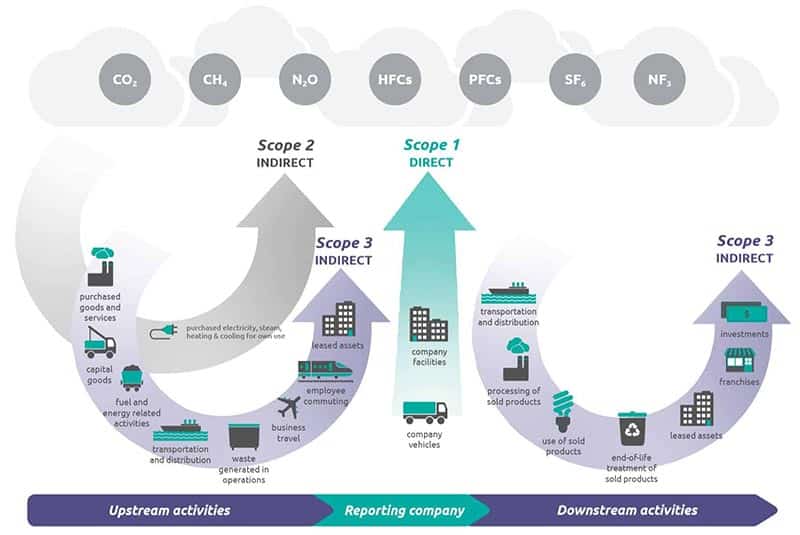GHG Scopes 101:
Overview of GHG Protocol scopes and emissions across the value chain

Source: GHG Protocol – Technical Guidance for Calculating Scope 3 Emissions
To help delineate direct and indirect emission sources, improve transparency, and provide utility for different types of organizations and different types of climate policies and business goals, three “scopes” (scope 1, scope 2, and scope 3) are defined for GHG accounting and reporting purposes.
Scopes 1 and 2 are carefully defined in this standard to ensure that two or more companies will not account for emissions in the same scope. This makes the scopes amenable for use in GHG programs where double counting matters. Companies shall separately account for and report on scopes 1 and 2 at a minimum.
All Direct Emissions from the activities of an organization or under their control. Including fuel combustion on site such as gas boilers, fleet vehicles and air-conditioning leaks.
Indirect Emissions from electricity purchased and used by the organization. Emissions are created during the production of the energy and eventually used by the organization.
All Other Indirect Emissions from activities of the organization, occurring from sources that they do not own or control. These are usually the greatest share of the carbon footprint, covering emissions associated with business travel, procurement, waste and water.
Return to the pathway to build your knowledge of greenhouse gas emissions
Return to Pathway